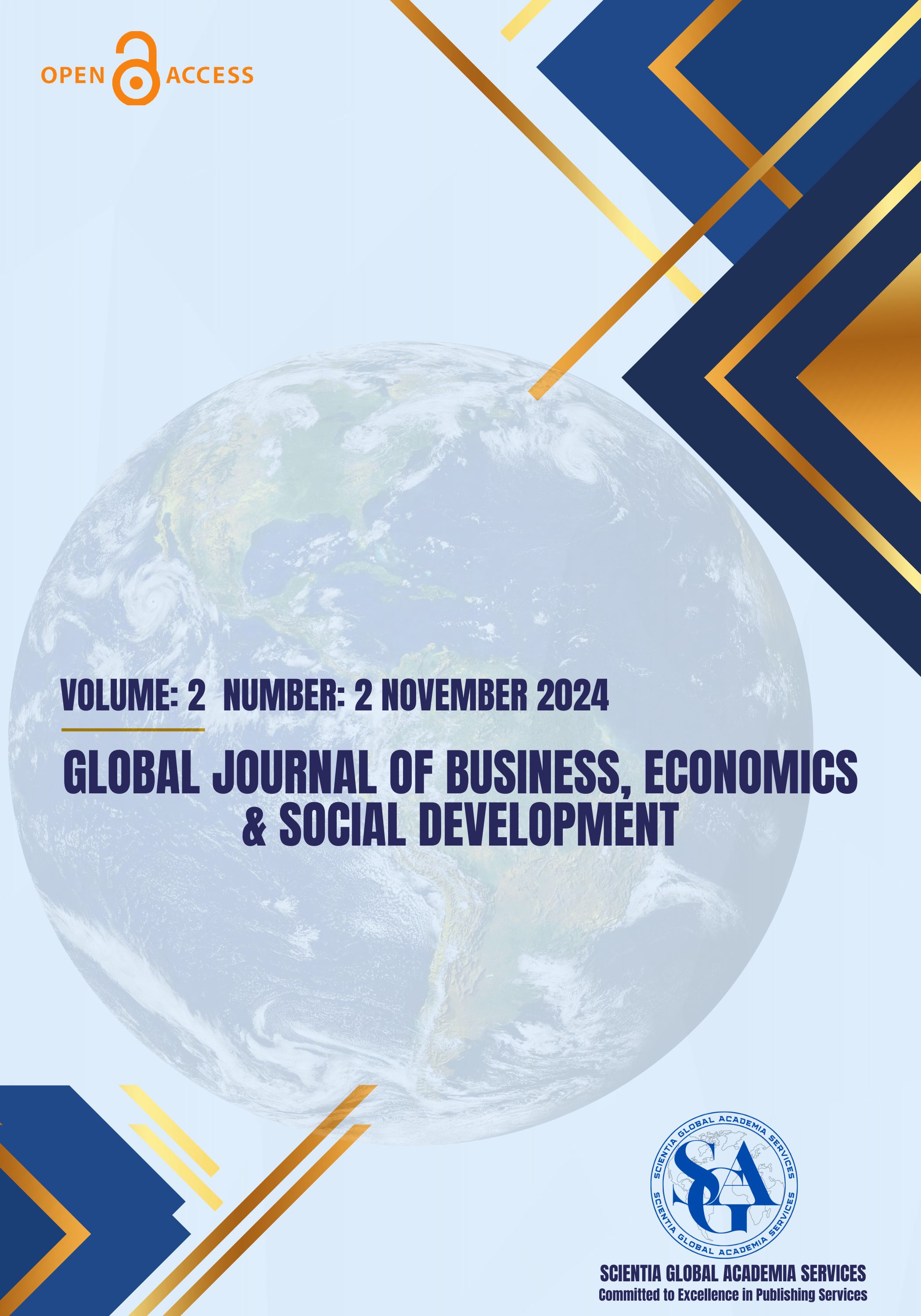A Review of Financial Reform Literature in Malaysia: Opportunities and Challenges
Main Article Content
Abstract
This study examines financial reform in Malaysia, focusing on the associated opportunities and challenges. The primary objective is to identify the key financial reforms implemented in the country and to explore their potential to enhance the stability and efficiency of the financial sector. A Systematic Literature Review (SLR) approach is employed to analyze both the historical development and current state of financial reforms in Malaysia. The study highlights the importance of striking a balance between economic growth and social justice in the reform process. It underscores the need for careful planning and phased implementation to mitigate the risk of financial instability. Furthermore, the achievement of sustainable economic growth and equitable social outcomes is deemed essential for the success of financial reforms. Emphasis is placed on ensuring the fair distribution of economic benefits across all segments of society. Lastly, the study affirms the critical role of government in formulating and executing effective financial reform policies that promote economic growth, reduce financial risk, enhance stability, and improve the accessibility of financial services for all citizens.
Article Details
Section

This work is licensed under a Creative Commons Attribution 4.0 International License.
How to Cite
References
Admin. (2022, June 7). Understand the meaning of reform. The Best Master of Law Study Program in North Sumatra. https://mh.uma.ac.id/pahami-pengertian-dari-reformasi/
Altintas, H., Gürsoy, G., & Tunay, K. B. (2021). Financial liberalization and bank performance: Evidence from the Turkish banking sector. Borsa Istanbul Review, 21(3), 245–256. https://doi.org/10.1016/j.bir.2020.10.001
Altintas, N., Ferrari, A., & Girardone, C. (2021). Do financial reforms always improve banks efficiency and competition? A long-term analysis of Turkey’s experience. Journal of Banking Regulation, 23(4), 458–469. https://doi.org/10.1057/s41261-021-00182-0
An, Z. (2023). Financial reforms and capital accumulation in developing economies: New data and evidence. China Economic Review, 77, 101895. https://doi.org/10.1016/j.chieco.2022.101895
An, Z. (2023). Financial reforms and capital formation in developing countries. Journal of International Financial Markets, Institutions and Money, 84, 101749. https://doi.org/10.1016/j.intfin.2023.101749
Aznaim, N., & Latib, A. (2017). Implications of financial services liberalization policy on Islamic banking in Malaysia / Noor Aznaim Abd Latib. http://studentsrepo.um.edu.my/7906/
Bank Negara Malaysia. (2020). Annual Report 2020. Kuala Lumpur: Bank Negara Malaysia. https://www.bnm.gov.my
Boikos, S., Bournakis, I., Christopoulos, D., & McAdam, P. (2023). Financial reforms and innovation: A micro–macro perspective. Journal of International Money and Finance, 132, 102820. https://doi.org/10.1016/j.jimonfin.2023.102820
Boikos, S., Chortareas, G., & Girardone, C. (2022). Financial reform and economic growth: International evidence. Journal of Financial Stability, 61, 101016. https://doi.org/10.1016/j.jfs.2022.101016
Boikos, S., Chortareas, G., & Girardone, C. (2023). Financial reforms, innovation, and R&D: Evidence from international panel data. Research in International Business and Finance, 65, 101956. https://doi.org/10.1016/j.ribaf.2023.101956
Boikos, S., Panagiotidis, T., & Voucharas, G. (2022). Financial development, reforms and growth. Economic Modelling, 108, 105734. https://doi.org/10.1016/j.econmod.2021.105734
Carpenter, D. (2010). Institutional strangulation: bureaucratic politics and financial reform in the Obama administration. Perspectives on Politics, 8(3), 825–846. https://doi.org/10.1017/s1537592710002070
Carpenter, D. (2010). Reputation and power: Organizational image and pharmaceutical regulation at the FDA. Princeton University Press.
Christopoulos, D. K., & McAdam, P. (2017). Financial reforms and income inequality: Evidence from a panel of 29 countries. Journal of Economic Behavior & Organization, 138, 160–177. https://doi.org/10.1016/j.jebo.2017.04.004
Christopoulos, D., & McAdam, P. (2017). Do financial reforms help stabilize inequality? Journal of International Money and Finance, 70, 45–61. https://doi.org/10.1016/j.jimonfin.2016.05.003
Elryah, L. (2014). Financial liberalization and Islamic banking in Malaysia: A critical review. Journal of Islamic Finance, 3(1), 009–017. https://doi.org/10.12816/0010959
Folarin, O. (2019). Financial reforms and industrialisation: evidence from Nigeria. Journal of Social and Economic Development, 21(1), 166–189. https://doi.org/10.1007/s40847-019-00075-z
Folarin, O. E. (2019). Financial reform and industrialisation: A Nigerian perspective. African Journal of Economic Policy, 26(1), 75–98.
Hayes, A. (2023, May 29). What does finance mean? Its history, types, and importance explained. Investopedia. https://www.investopedia.com/terms/f/finance.asp
Khalid, Hassan N. (2012). An Analysis of The Dichotomy Between Urban And Rural Poverty In Malaysia. Perspective Journal, 4(1), 1–21.
Khalid, M. A. (2012). Inequality and economic growth in Malaysia. Kuala Lumpur: Malaysian Economic Association.
Mazlan, M. H., Abdullah, M. A., & Kamarulzaman, Y. (2022). A systematic literature review (SLR) approach in financial reform studies. Journal of Governance and Integrity, 6(1), 85–94. https://doi.org/10.15282/jgi.vol6no1.2022.7650
Mazlan, N. a. S., Nawawi, M. N., Saputra, J., Muhamad, S. B., & Abdullah, R. (2022). Classification of Attributes on Green Manufacturing Practices: A Systematic review. International Journal of Sustainable Development and Planning, 17(6), 1839–1847. https://doi.org/10.18280/ijsdp.170618
Noor Aznaim, & Mohammad Taqiuddin. (2018). Assessment Of The Effect Of Financial Policy Reform On Islamic Banking Institutions In Malaysia. Labuan e-Journal of Muamalat and Society, 12, 69–88.
Shuib, M. S., Keling, M. F., & Osman, N. (2020, December 10). Mahathiriskonomism: Clarifying Mahathir Mohamad's Role in the Management of the 1997/98 Economic Crisis. Malaysian Journal of Social Sciences and Humanities (MJSSH), 5(12), 374–391. https://doi.org/10.47405/mjssh.v5i12.621
Shuib, M. S., Ramlee, N. H., & Daud, Z. (2020). The evolution of financial reforms in Malaysia. Asian Journal of Accounting and Governance, 13, 12–22. https://doi.org/10.17576/ajak-2020-13-02
Tabash, M. I., Anagreh, S. M., & Jreisat, A. (2022). Financial development and poverty reduction: Evidence from Sub-Saharan Africa. Journal of African Business, 23(1), 1–20. https://doi.org/10.1080/15228916.2021.1888961
Tabash, M. I., Anagreh, S., & Adeosun, O. A. (2022). Revisiting the impact of financial development on income inequality and poverty reduction: empirical evidence from selected sub-Saharan African countries. The International Journal of Organizational Analysis, 31(7), 3393–3412. https://doi.org/10.1108/ijoa-05-2022-3279
Zhang, H., & Chen, Y. (2023). Financial reforms and environmental sustainability: Evidence from haze pollution in emerging economies. Environmental Science and Policy, 139, 30–42. https://doi.org/10.1016/j.envsci.2023.02.005

